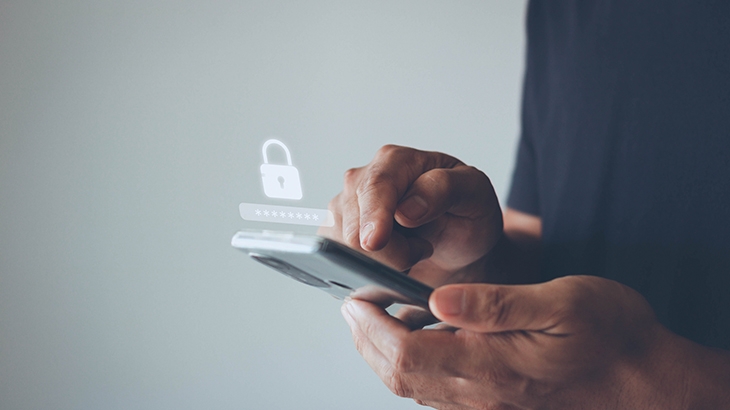Articles about Security and Privacy
![Concerned woman checking her mobile phone.]()
Scams: What Your Bank Will Never Ask You For
![Couple paying bills on laptop.]()
How to Protect Your Debit Card from Fraud
![Man looking frustrated while looking at his mobile phone.]()
What You Need to Know About AI Scams
![Senior man making a contactless mobile phone payment.]()
How Safe is it to Use Apple Pay and Google Pay
![A frustrated man looking at a laptop.]()
How to Spot Credit Repair Scams
![Happy girl using tablet with her father, mother in the background reading on the couch.]()
How Can You Prevent Child Identity Theft
![Man typing secure password on smartphone.]()
Password Testing Tool
![Concerned woman looking at a smartphone sitting on a couch.]()
How to Identify Scams and Prevent Them
![Women singing, using her toothbrush as a microphone.]()
How Voice-Activated Banking Works
![Depositing cash at bank counter.]()
Money Safety in Banks
![Woman entering secure password on smartphone, secure icon above.]()
Protect Your Bank Accounts
![Woman using smartphone with dollar icons above it.]()
Online and Mobile Banking Security and Safety—What You Should Know
![Woman having problems with her laptop with a confused and frustrated look.]()
What is Cybersecurity and How Can I Protect Myself?
![Young man using laptop at home.]()
Top 10 Ways to Protect Yourself Online
![Frustrated woman looking at a laptop.]()
IRS & Tax Season Scams You Should Know
![Woman holding credit card while shopping on phone outside.]()
6 Ways to Keep Your Devices Secure When Shopping Online
![A woman helping her father with finances.]()
How to Protect the Elderly from Financial Abuse
![Woman looking stressed while looking at a document.]()
Can Someone Steal Your Tax Return
Awarded America's Best Big Bank - Three Years in a Row
Best Big Bank in Washington, Idaho, New Mexico
Awarded America's Best-in-State Bank
Best-in-State Bank in Washington, Nevada, New Mexico
Awarded America's Best Big Bank - Three Years in a Row
Best Big Bank in Washington, Idaho, New Mexico
Awarded America's Best-in-State Bank
Best-in-State Bank in Washington, Nevada, New Mexico





















